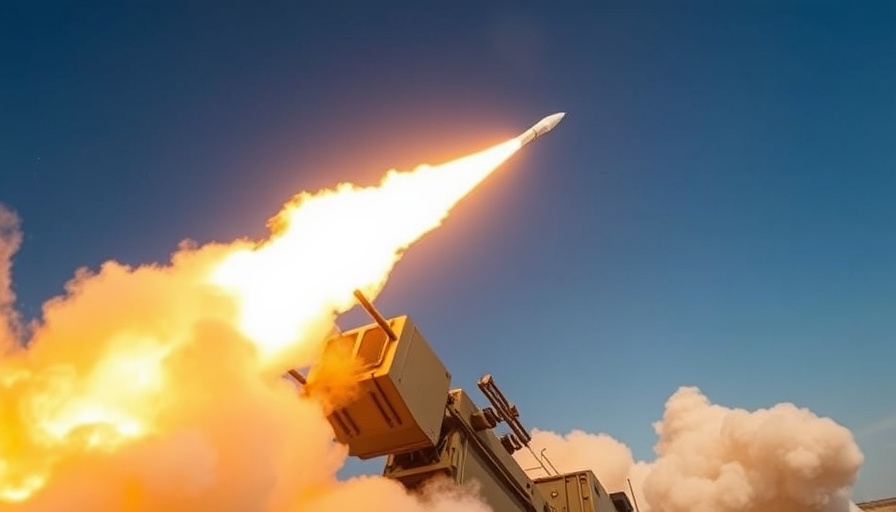
The Next Generation of Defense: Lockheed Martin's JAGM Quad Launcher
In a world increasingly defined by emerging threats, Lockheed Martin is setting a new standard in defense technology with its Joint Air-to-Ground Missile Quad Launcher (JQL). Recently tested at the Yuma Proving Grounds, this innovative system successfully launched a JAGM missile for the first time from a canister-based launcher, marking a significant milestone for the aerospace and defense technology sector. Understanding the significance of this development requires a closer look at what the JQL is and how it changes the game for modern military operations.
What Is the JAGM Quad Launcher?
The JQL is designed to rapidly deploy the Joint Air-to-Ground Missile (JAGM), offering flexibility and readiness that is crucial in today’s fast-paced strategic environments. This canister-based launcher features four independent composite cells that allow for quick reloads, enhancing operational efficiency. The system's ability to launch missiles from both angled and vertical positions extends its versatility against various threats on land and at sea.
Recent tests demonstrated the launcher’s capability to engage targets effectively, providing real-time data on missile performance, which is crucial for refining strategies and ensuring that our armed forces have cutting-edge tools. Casey Walsh, a program management director at Lockheed Martin Missiles and Fire Control, emphasized that this technological leap showcases the adaptability of JAGM, enabling defense capabilities across multiple mission scenarios.
Strategic Implications of the JQL
One of the JQL's most notable benefits is its potential application in countering Unmanned Aerial Systems (UAS). As swarms of drones and sophisticated aerial threats become more common, a robust response mechanism is critical. Lockheed Martin's new system provides a fast-reload option and can be installed on various platforms, including ground vehicles and naval ships, maximizing operational scope.
Furthermore, its modular design means that the JQL can be scaled according to mission requirements—whether it's a single unit mounted on a tactical vehicle or multiple units integrated into naval vessels. This adaptability not only enhances its operational value but also allows military planners to tailor defense strategies to specific threats, ensuring that they remain ahead of potential adversaries.
The Future of Vertical Launch Systems
The successful tests pave the way for future demonstrations, including a vertical launch trial scheduled for November 2025. This upcoming test aims to further validate the JAGM’s counter-UAS abilities, showcasing a shift toward vertical launch configurations that can dramatically alter the dynamics of battlefield engagements.
As military challenges evolve, so too must the technologies employed to address them. The JQL system exemplifies Lockheed Martin’s commitment to innovative solutions that respond dynamically to complex security demands. By leveraging decades of experience in missile systems, the company ensures that its offerings comply with modern military operations' growing complexity.
Why This Matters to You
For civilians and military personnel alike, understanding advancements like the JQL system underscores the importance of technological innovation in safeguarding freedoms and fostering global security. The developments at Lockheed Martin reflect a proactive approach to defense that not only comes from necessity but also anticipates future challenges. The implications are far-reaching, meaning not only increased safety for armed services but potentially a reduction of risks in global hotspots.
Conclusion: An Exciting Step Forward
The successful test of Lockheed Martin’s JAGM Quad Launch Canister System marks an important step toward enhanced military capability and further integration of cutting-edge technology in defense systems. As leaders in innovation, companies like Lockheed Martin are crucial in shaping how armed forces operate in an increasingly complex world.
Innovation in defense technology not only protects military personnel but ultimately contributes to global stability. The advancements made with the JQL represent hope for a future where swift, decisive action can be taken to address threats before they escalate.
 Add Row
Add Row  Add
Add 




Write A Comment